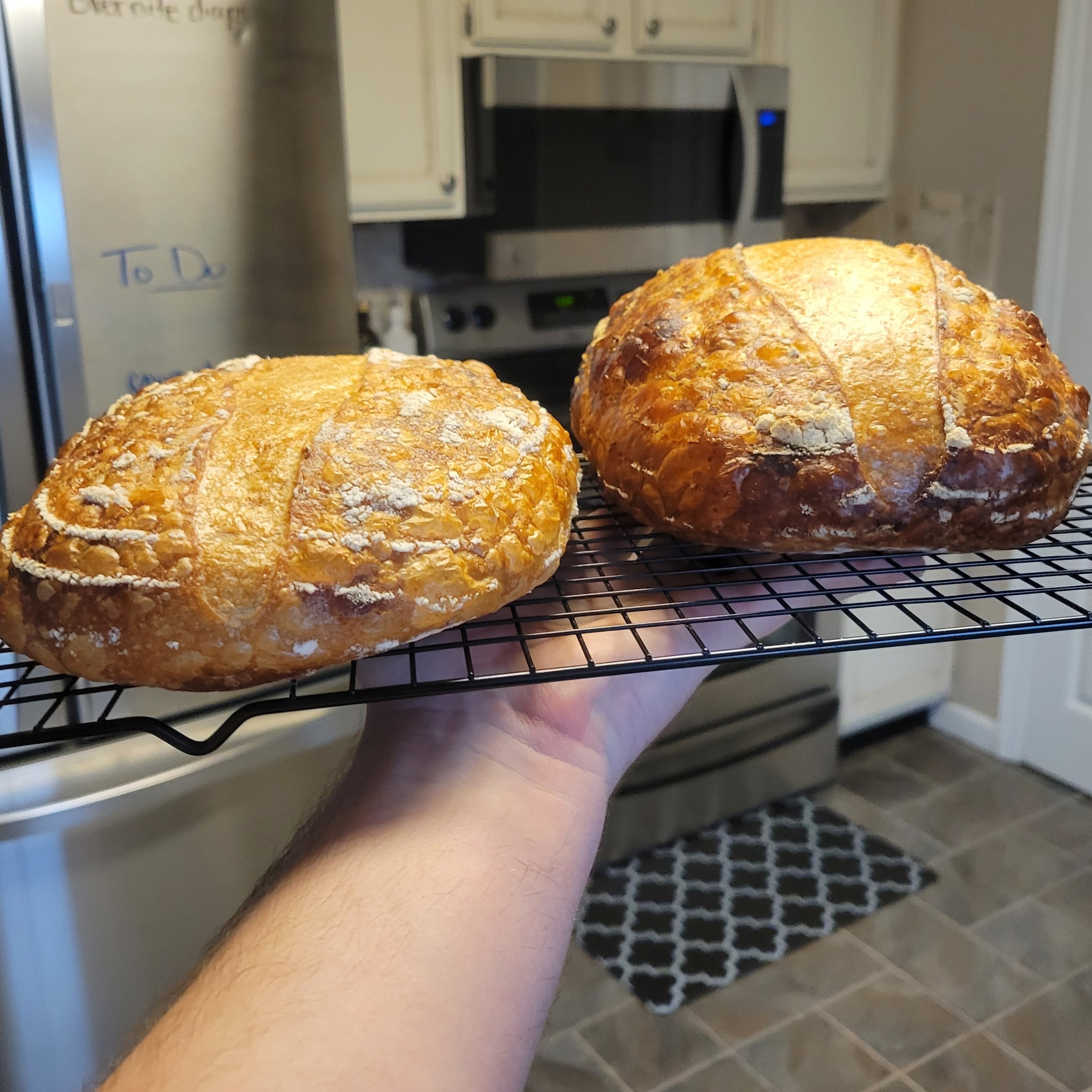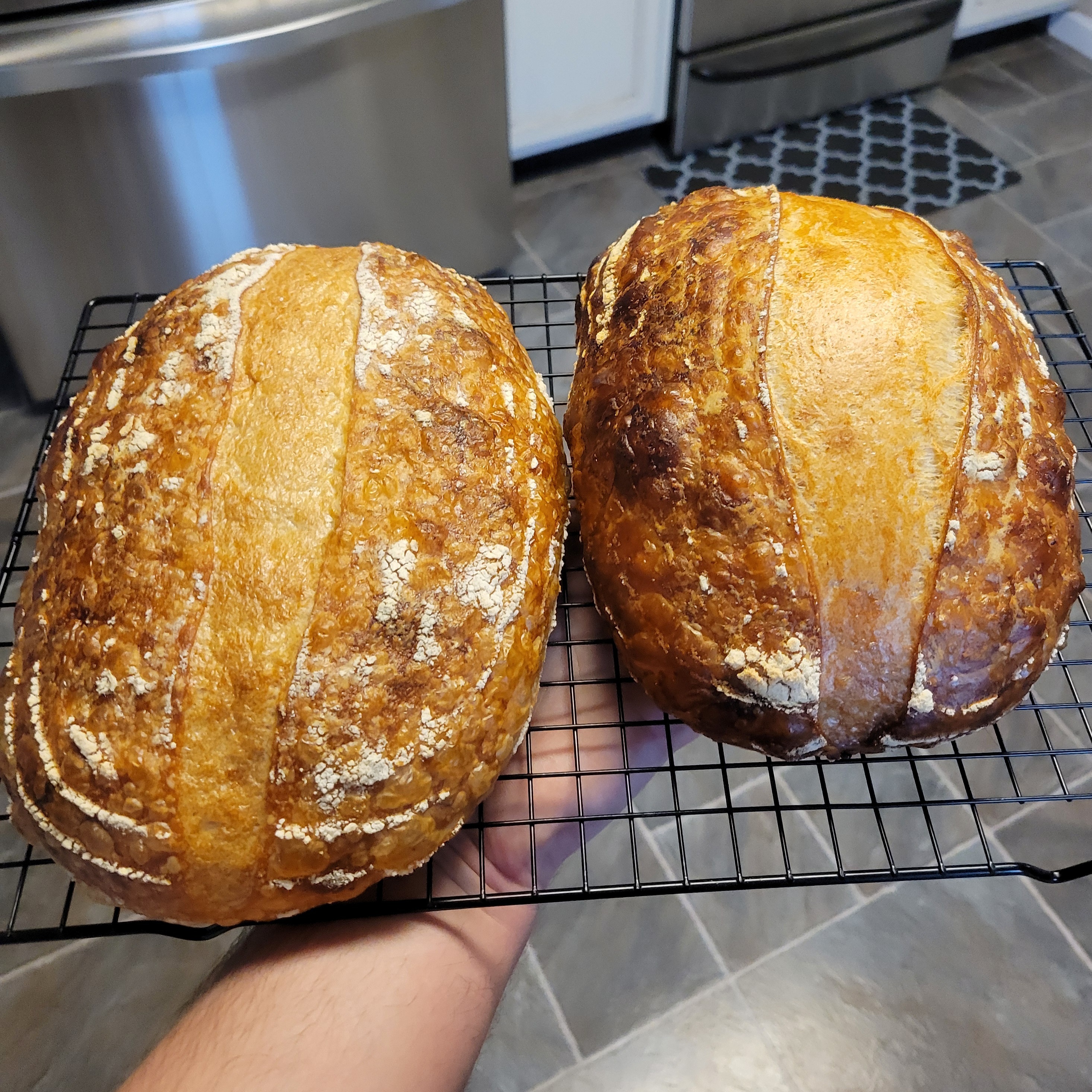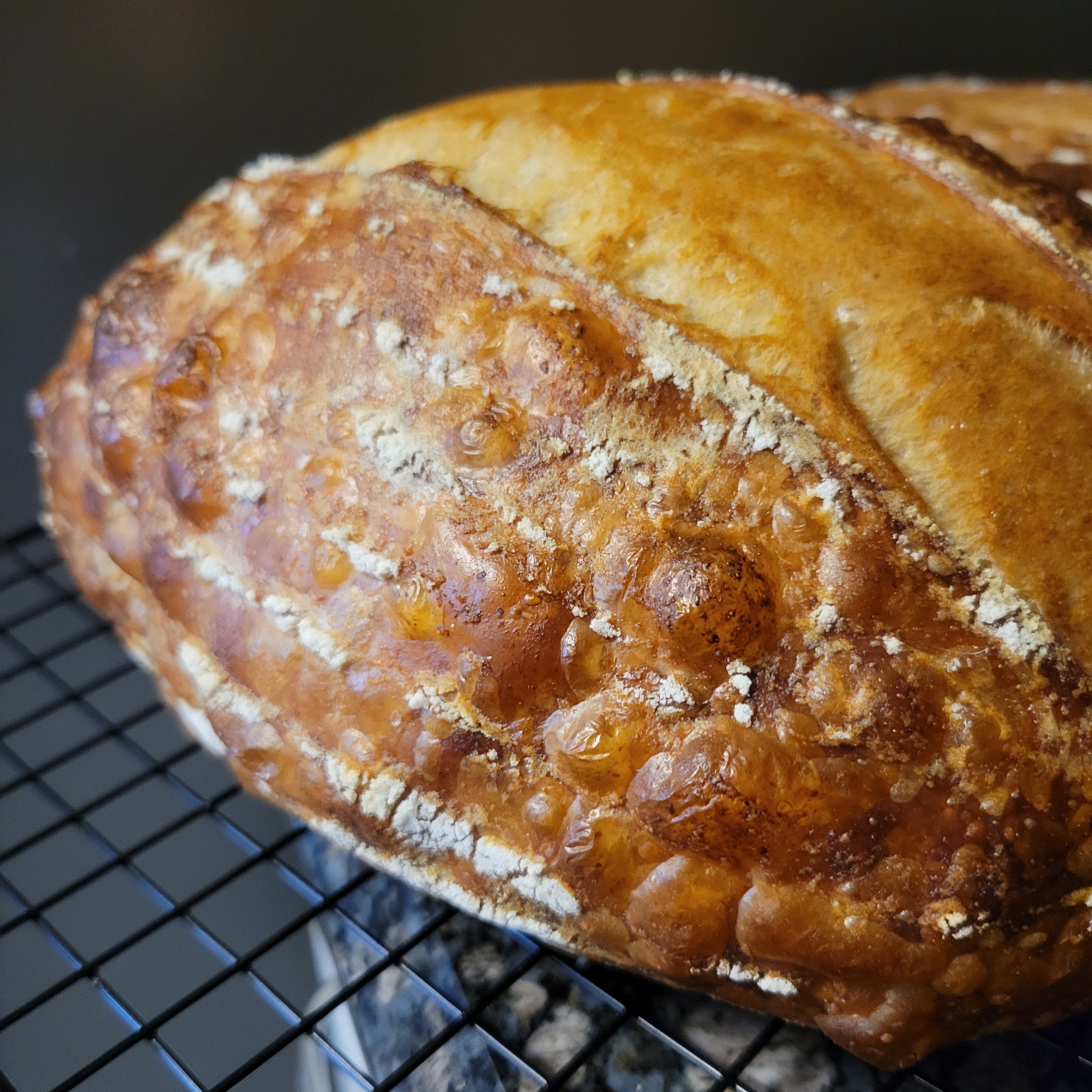Having just bought Open Crumb Mastery by Trevor Wilson (not a plug, just a genuine wealth of information), I proceeded to not read it and do an experiment on a whim, with not much thought behind it.
I’ve always wondered about the function of the bulk fermentation(BF) vs the final proof in a banneton. I just couldn’t find, through my own reasoning, why the biological processes that happen during the BF couldn’t happen after shaping, simply with a longer final proof.
What I was trying to avoid was handling the dough after it had started to accumulate gas.
SO, I used the tartine country loaf, as usual, but cut the BF to like 45 minutes or maybe an hour, then shaped into loaves. The super flat loaf proofed for like five hours at room temp, then was baked. The slightly better one proofed in the fridge for 18ish hours.
My thinking is that, since this is such a slow recipe to begin with, neither of these alterations gave the organisms time to “activate” and begin properly fermenting/leavening the dough.
Still smells fucking stellar, though.
Lemme know what you think, I’d also welcome a good discussion about really open crumb



No crumb pictures, but, like, are they really necessary?
Wow, great job doing kitchen science. Those look amazing! I’ll have to check out that book, thank you for sharing.
I think it was like $15. It’s only available as a pdf though, which is a pretty significant bummer
I always get some huge bubbles during bulk fermentation. I suspect that local thermal differences combined with gluten structure causes some parts of the dough to collect more CO2 than other parts. Shaping after bulk ferment, those really big bubbles get popped. Final rise will still create some bigger bubbles, but usually not that much. Having them as two separate steps allows for more uniformity in the crumb, in my experience. It also allows for the final “structure” of the loaf to be created with dough that’s partially inflated vs. uninflated.
It seems like your results corroborate that. I do like the look of the bubbles on the surface of your loaves, and it looks like something you might not get without the slightly longer final proof.
Despite the aesthetics, I’m actually usually not a big fan of super open crumb. I like to use my bread for sandwiches/toast/etc, and i find that they end up messy if the crumb is too open.
I agree with you on the lack of practicality for a very open crumb, but because I’m quite satisfied with most other aspects of my loaves this is the next goal to chase
Ever made pan de cristal? A loaf is so open and light, it feels like fake bread.
I have made that once, it’s phenomenal
I don’t like the big holes in mine but have noticed that I get much better results (in terms of spectacular oven rise) making two loaves than one, unless I’m making a really big loaf. Like there needs to be that large mass of dough for it to really ferment well. And yeah bulk rise even with no kneading, just a few stretch and folds, gets better results than kneading and putting it in baskets to rise.
Bench rest, too. I never skip that anymore, it really does make a difference. Lazy shape & wait 20-30 minutes before really shaping them.
Great blisters! I think the trick to keep in your head is that fermentation curve.
That’s an excellent read, thanks!

